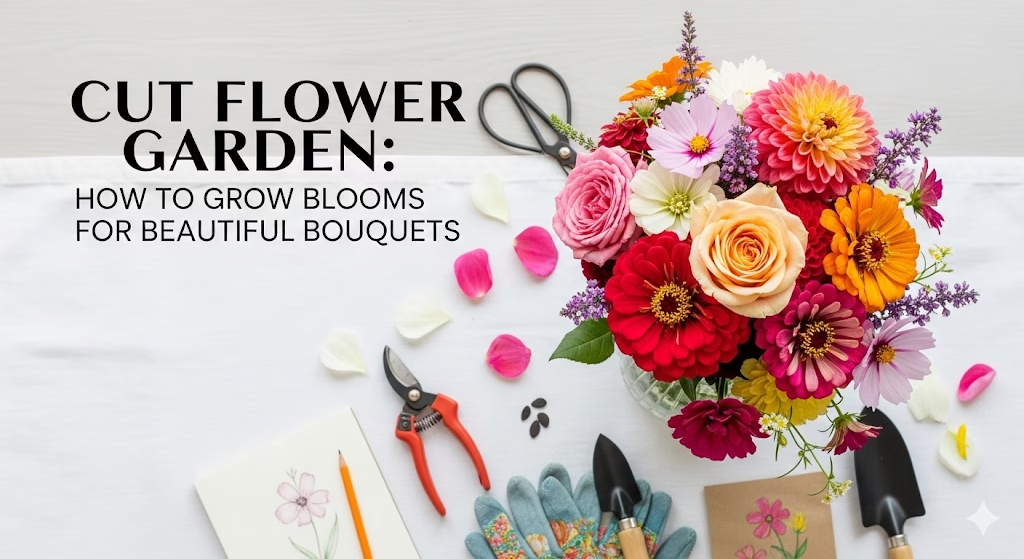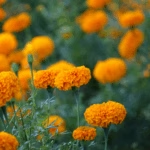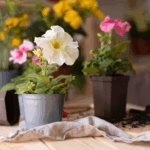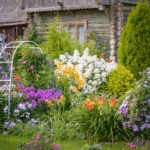What Is a Cut Flower Garden?
A cut flower garden is a space—whether a backyard bed, raised planter, or even a few pots—dedicated to growing flowers for cutting and arranging indoors. Unlike ornamental beds designed for landscaping, cut flower gardens focus on continuous blooms, long stems, and easy harvesting.

According to the University of Minnesota Extension, planning your garden around successive blooming ensures a steady supply of flowers from spring to fall.
Benefits of Growing a Cut Flower Garden
- Fresh Blooms at Home: Enjoy hand-picked bouquets without spending money at florists.
- Seasonal Variety: Grow flowers that bloom in different months for color all year.
- Pollinator Friendly: Many cut flowers attract bees and butterflies.
- Custom Designs: Mix colors, textures, and scents for unique arrangements.
- Therapeutic Gardening: Cutting and arranging flowers is calming and creative.
Planning Your Cut Flower Garden
1. Choose the Right Location
- Sunlight: At least 6–8 hours of direct sunlight daily.
- Soil: Well-draining, fertile soil enriched with organic compost.
- Access: Place near a path for easy cutting and watering.
2. Garden Layout
- Plant in rows or blocks to make harvesting easier.
- Taller plants like sunflowers and gladiolus go in the back; shorter plants like zinnias and cosmos go in front.
- Stagger plantings every 2–3 weeks for continuous blooms.
Best Flowers for a Cut Flower Garden
Annual Flowers (fast, colorful, bloom all season)
- Zinnias
- Cosmos
- Sunflowers
- Snapdragons
- Marigolds
Perennial Flowers (come back every year)
- Shasta daisies
- Coneflowers (Echinacea)
- Phlox
- Black-eyed Susans
- Peonies
Bulbs and Tubers
- Tulips (spring)
- Daffodils (spring)
- Gladiolus (summer)
- Dahlias (summer–fall)
Herbs for Filler & Fragrance
- Lavender
- Basil
- Mint
- Dill
Pro tip: Mix annuals and perennials to ensure you always have flowers ready for cutting.
Caring for Your Cut Flower Garden
- Watering: Deeply once or twice per week. Avoid overhead watering to reduce fungal disease.
- Fertilizing: Use a balanced fertilizer every 4–6 weeks. Organic compost boosts soil health.
- Deadheading: Remove spent blooms to encourage more flowers.
- Pest Control: Use eco-friendly pest control, such as neem oil or companion planting (see our eco-friendly pest guide).
- Staking: Support tall plants like gladiolus and sunflowers with stakes or netting.
How to Harvest Cut Flowers
- Time of Day: Cut flowers in the early morning or evening when they’re most hydrated.
- Tools: Use clean, sharp scissors or pruners.
- Stem Length: Cut at an angle to maximize water absorption.
- Conditioning: Place stems in lukewarm water immediately after cutting.
- Preservation: Change vase water every 2 days, remove foliage below water level, and recut stems to extend vase life.
Cut Flower Garden vs. Ornamental Garden
| Feature | Cut Flower Garden | Ornamental Garden |
|---|---|---|
| Purpose | Grow flowers for indoor use | Beautify outdoor space |
| Planting Style | Rows or blocks | Decorative patterns, borders |
| Focus | Long stems, continuous blooms | Visual landscaping |
| Harvest | Regularly cut flowers | Usually left uncut |
FAQs About Cut Flower Gardens
1. What is the easiest flower to grow for cutting?
Zinnias are beginner-friendly, bloom all summer, and last long in vases.
2. Can I grow a cut flower garden in pots?
Yes—compact flowers like cosmos, marigolds, and dwarf sunflowers do well in containers.
3. How do I make my cut flowers last longer?
Keep them in clean water, recut stems every two days, and avoid placing them near ripening fruit (which releases ethylene gas).
4. Do I need a large yard for a cut flower garden?
No—even a small raised bed, balcony, or containers can supply a steady stream of blooms.
5. When should I plant a cut flower garden?
Spring is the best time, but you can plant successively every 2–3 weeks to extend the harvest season.
Conclusion
A cut flower garden is a rewarding way to bring nature’s beauty indoors while enriching your outdoor space. With the right mix of annuals, perennials, and bulbs, you can enjoy fresh bouquets from spring through fall. Whether you have a backyard or just a few containers, starting a cut flower garden is simple, affordable, and endlessly rewarding.
Call to Action: Ready to grow your own flower supply? Explore more guides on soil health, composting, and sustainable gardening at Agzora.com.





